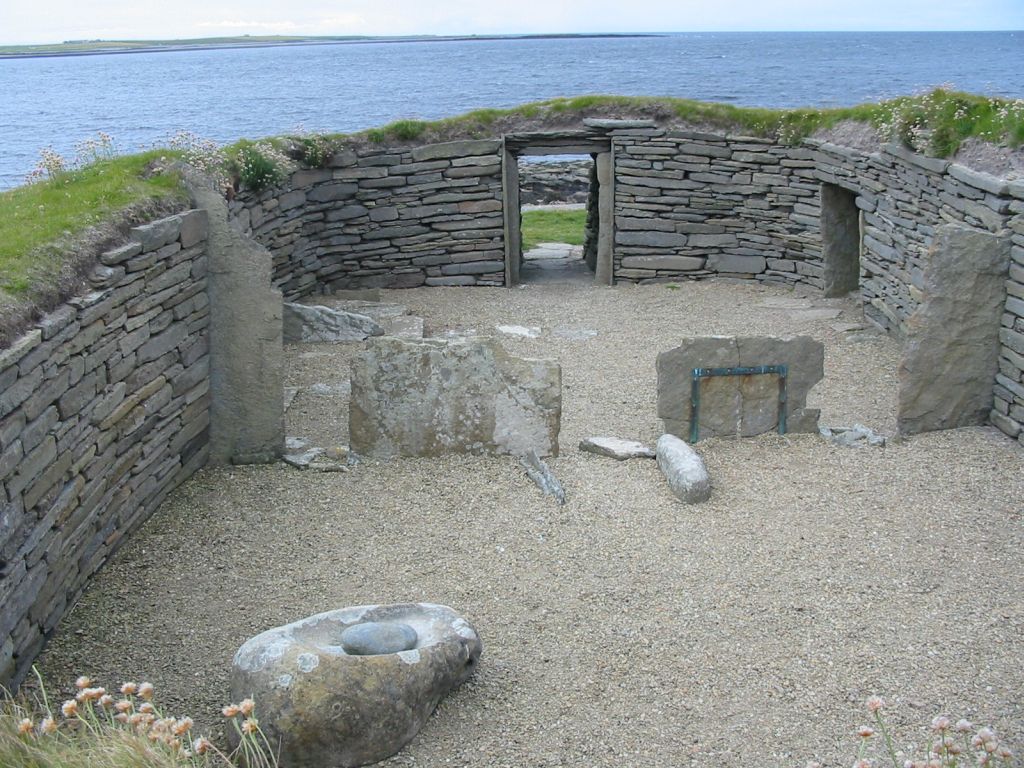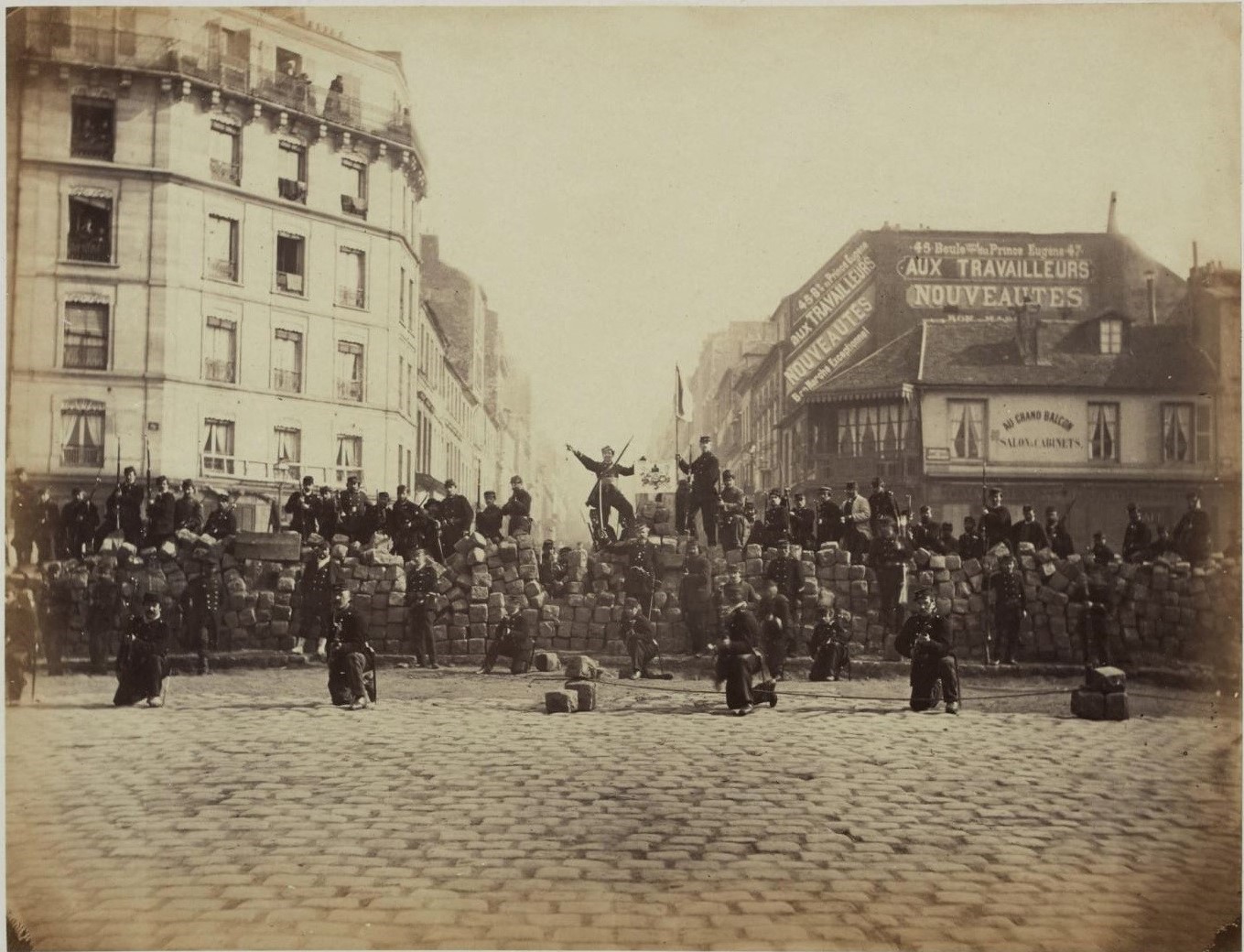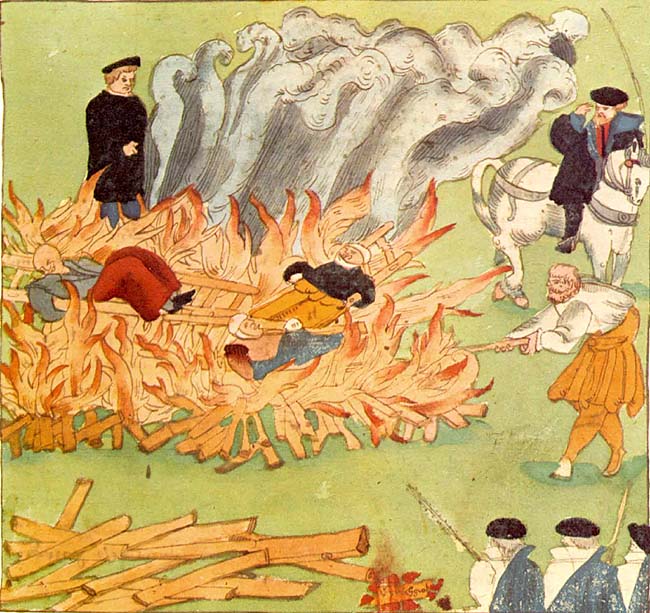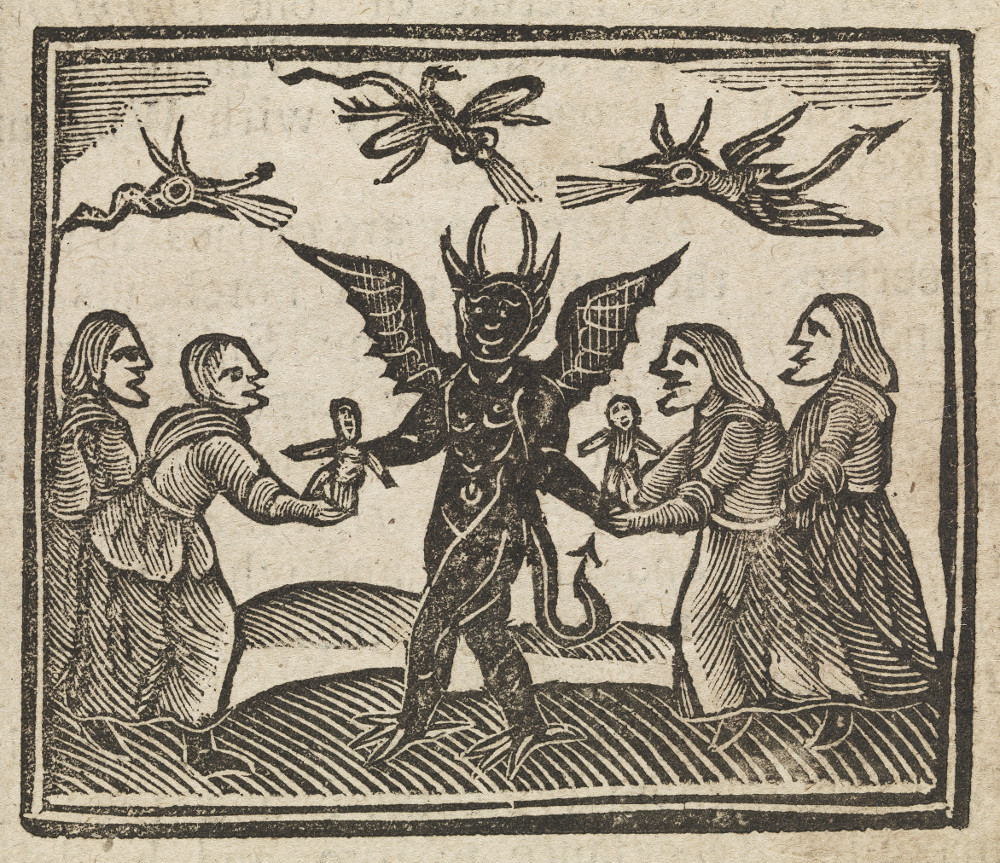|
Witches Of Scotland
Witches of Scotland is a campaign for legal pardons and historic justice for the people, primarily women, convicted of witchcraft and executed in Scotland between 1563 and 1736. It aims to obtain a pardon, an apology, and a national memorial for the convicted from the Scottish parliament. Led by Claire Mitchell QC and writer Zoe Venditozzi, the campaign was launched on International Women's Day in 2020, and gained significant media coverage in 2021. The podcasts published by the campaign include contributions from Carolyn Jess Cooke, Sara Sheridan, Julia Campanelli, Julian Goodare and Alice Tarbuck. Historical background In Scotland the Witchcraft Act remained in law till 1736. Witchcraft was a capital crime and punished by strangulation and burning at the stake. Claire Mitchell QC provides evidence that Scotland executed five times as many people per capita as anywhere else in Europe. An estimated 3837 people were accused, 2558 of whom were killed. 84% of the convicted were ... [...More Info...] [...Related Items...] OR: [Wikipedia] [Google] [Baidu] |
Pardon
A pardon is a government decision to allow a person to be relieved of some or all of the legal consequences resulting from a criminal conviction. A pardon may be granted before or after conviction for the crime, depending on the laws of the jurisdiction. Pardons can be granted in many countries when individuals are deemed to have demonstrated that they have "paid their debt to society", or are otherwise considered to be deserving of them. In some jurisdictions of some nations, accepting a pardon may ''implicitly'' constitute an admission of guilt; the offer is refused in some cases. Cases of wrongful conviction are in recent times more often dealt with by appeal rather than by pardon; however, a pardon is sometimes offered when innocence is undisputed in order to avoid the costs that are associated with a retrial. Clemency plays a critical role when capital punishment exists in a jurisdiction. Pardons are sometimes seen as a mechanism for combating corruption, allowing a part ... [...More Info...] [...Related Items...] OR: [Wikipedia] [Google] [Baidu] |
Nicola Sturgeon
Nicola Ferguson Sturgeon (born 19 July 1970) is a Scottish politician serving as First Minister of Scotland and Leader of the Scottish National Party (SNP) since 2014. She is the first woman to hold either position. She has been a member of the Scottish Parliament (MSP) since 1999, first as an additional member for the Glasgow electoral region, and as the member for Glasgow Southside (formerly Glasgow Govan) from 2007. Born in Ayrshire, Sturgeon is a law graduate of the University of Glasgow, having worked as a solicitor in Glasgow before her election to the Scottish Parliament in 1999. She served successively as the SNP's shadow minister for education, health, and justice. In 2004, Sturgeon announced she would stand as a candidate for the leadership of the SNP, however, she later withdrew from the contest in favour of Alex Salmond, standing instead as depute (deputy) leader on a joint ticket with Salmond. Both were subsequently elected, and as Salmond was still an MP ... [...More Info...] [...Related Items...] OR: [Wikipedia] [Google] [Baidu] |
Witch Trials In Scotland
In early modern Scotland, inbetween the early 16th century and the mid-18th century, judicial proceedings concerned with the crimes of witchcraft ( gd, buidseachd) took place as part of a series of witch trials in Early Modern Europe. In the late middle age there were a handful of prosecutions for harm done through witchcraft, but the passing of the Witchcraft Act 1563 made witchcraft, or consulting with witches, capital crimes. The first major issue of trials under the new act were the North Berwick witch trials, beginning in 1590, in which King James VI played a major part as "victim" and investigator. He became interested in witchcraft and published a defence of witch-hunting in the ''Daemonologie'' in 1597, but he appears to have become increasingly sceptical and eventually took steps to limit prosecutions. An estimated 4,000 to 6,000 people, mostly from the Scottish Lowlands, were tried for witchcraft in this period, a much higher rate than for neighbouring England. There w ... [...More Info...] [...Related Items...] OR: [Wikipedia] [Google] [Baidu] |
Torture In Scotland
Torture is the deliberate infliction of severe pain or suffering on a person for reasons such as punishment, extracting a confession, interrogation for information, or intimidating third parties. Some definitions are restricted to acts carried out by the state, but others include non-state organizations. Torture has been carried out since ancient times. In the eighteenth and nineteenth centuries, Western countries abolished the official use of torture in the judicial system, but torture continued to be used throughout the world. A variety of methods of torture are used, often in combination; the most common form of physical torture is beatings. Since the twentieth century, many torturers have preferred non-scarring or psychological methods to provide deniability. Torturers are enabled by organizations that facilitate and encourage their behavior. Most victims of torture are poor and marginalized people suspected of crimes, although torture against political prisoners or ... [...More Info...] [...Related Items...] OR: [Wikipedia] [Google] [Baidu] |
Women's Rights In Scotland
A woman is an adult female human. Prior to adulthood, a female human is referred to as a girl (a female child or adolescent). The plural ''women'' is sometimes used in certain phrases such as "women's rights" to denote female humans regardless of age. Typically, women inherit a pair of X chromosomes, one from each parent, and are capable of pregnancy and giving birth from puberty until menopause. More generally, sex differentiation of the female fetus is governed by the lack of a present, or functioning, SRY-gene on either one of the respective sex chromosomes. Female anatomy is distinguished from male anatomy by the female reproductive system, which includes the ovaries, fallopian tubes, uterus, vagina, and vulva. A fully developed woman generally has a wider pelvis, broader hips, and larger breasts than an adult man. Women have significantly less facial and other body hair, have a higher body fat composition, and are on average shorter and less muscular than men. Througho ... [...More Info...] [...Related Items...] OR: [Wikipedia] [Google] [Baidu] |
History Of Women In The United Kingdom
History of women in the United Kingdom covers the social, cultural and political roles of women in Britain over the last two millennia. Medieval Medieval England was a patriarchal society and the lives of women were heavily influenced by contemporary beliefs about gender and authority. However, the position of women varied according to factors including their social class; whether they were unmarried, married, widowed or remarried; and in which part of the country they lived. Henrietta Leyser argues that women had much informal power in their homes and communities, although they were of officially subordinate to men. She identifies a deterioration the status of women in the Middle Ages, although they retained strong roles in culture and spirituality. Significant gender inequities persisted throughout the period, as women typically had more limited life-choices, access to employment and trade, and legal rights than men. After the Norman invasion, the position of women in so ... [...More Info...] [...Related Items...] OR: [Wikipedia] [Google] [Baidu] |
History Of Scotland
The recorded begins with the arrival of the Roman Empire in the 1st century, when the province of Britannia reached as far north as the Antonine Wall. North of this was Caledonia, inhabited by the ''Picti'', whose uprisings forced Rome's legions back to Hadrian's Wall. As Rome finally withdrew from Britain, Gaelic raiders called the ''Scoti'' began colonising Western Scotland and Wales. Prior to Roman times, prehistoric Scotland entered the Neolithic Era about 4000 BC, the Bronze Age about 2000 BC, and the Iron Age around 700 BC. The Gaelic kingdom of Dál Riata was founded on the west coast of Scotland in the 6th century. In the following century, Irish missionaries introduced the previously pagan Picts to Celtic Christianity. Following England's Gregorian mission, the Pictish king Nechtan chose to abolish most Celtic practices in favour of the Roman rite, restricting Gaelic influence on his kingdom and avoiding war with Anglian Northumbria. Tow ... [...More Info...] [...Related Items...] OR: [Wikipedia] [Google] [Baidu] |
Activism In Scotland
Activism (or Advocacy) consists of efforts to promote, impede, direct or intervene in social, political, economic or environmental reform with the desire to make changes in society toward a perceived greater good. Forms of activism range from mandate building in a community (including writing letters to newspapers), petitioning elected officials, running or contributing to a political campaign, preferential patronage (or boycott) of businesses, and demonstrative forms of activism like rallies, street marches, strikes, sit-ins, or hunger strikes. Activism may be performed on a day-to-day basis in a wide variety of ways, including through the creation of art (artivism), computer hacking ( hacktivism), or simply in how one chooses to spend their money ( economic activism). For example, the refusal to buy clothes or other merchandise from a company as a protest against the exploitation of workers by that company could be considered an expression of activism. However, the most ... [...More Info...] [...Related Items...] OR: [Wikipedia] [Google] [Baidu] |
List Of People Executed For Witchcraft
This is a list of people executed for witchcraft, many of whom were executed during organized witch-hunts, particularly during the 15th–18th centuries. Large numbers of people were prosecuted for witchcraft in Europe between 1560 and 1630.Levack, p. 204 Until around 1440, witchcraft-related prosecutions in Europe centered on '' maleficium'', the concept of using supernatural powers specifically to harm others. Cases came about from accusations of the use of ritual magic to damage rivals. Until the early 15th century, there was little association of witchcraft with Satan.Levack, p. 205 From that time organized witch-hunts increased, as did individual accusations of sorcery. The nature of the charges brought changed as more cases were linked to diabolism. Throughout the century, several treatises were published that helped to establish a stereotype of the witch, particularly the Satanic connection. During the 16th century, witchcraft prosecutions stabilized and even declined in so ... [...More Info...] [...Related Items...] OR: [Wikipedia] [Google] [Baidu] |
Survey Of Scottish Witchcraft
The Survey of Scottish Witchcraft is an online database of witch trials in early modern Scotland, containing details of 3,837 accused gathered from contemporary court documents covering the period from 1563 until the repeal of the Scottish Witchcraft Act in 1736. The survey was made available online in 2003 after two years of work at the University of Edinburgh by Julian Goodare, now a professor of history at the University of Edinburgh, and Louise Yeoman, ex-curator at the National Library of Scotland, now a producer/presenter at BBC Radio Scotland, with assistance from researchers Lauren Martin and Joyce Miller, and Computing Services at the University of Edinburgh. The database is available for download from the website. Media attention in October 2019 The project received media attention in October 2019 for two reasons. Firstly, an interactive map showing where the accused witches resided was made public after work at the University of Edinburgh by Ewan McAndrew, Wikimedian ... [...More Info...] [...Related Items...] OR: [Wikipedia] [Google] [Baidu] |
Great Scottish Witch Hunt Of 1649–50
The great Scottish witch hunt of 1649–50 was a series of witch trials in Scotland. It is one of five major hunts identified in early modern Scotland and it probably saw the most executions in a single year. The trials occurred in a period of economic, political and religious unrest. Political and religious turmoil was caused by defeat for the Scottish army in the Second English Civil War and the rise to power of the radical Kirk party, who attempted to create a "godly society", rooting out witches and other offenders. They passed a new Witchcraft Act in 1649 and encouraged local presbyteries to seek out witches. The intense period of witch hunting began in 1649 and continued into 1650, being largely confined to the Lowlands, particularly Lothian and Fife, but spilled over into northern England, where Scottish witch prickers were active. The period of rule by the Kirk party ended when Oliver Cromwell led an army across the border in July 1650. Some 612 records of accusations of w ... [...More Info...] [...Related Items...] OR: [Wikipedia] [Google] [Baidu] |
Great Scottish Witch Hunt Of 1661–62
The Great Scottish Witch Hunt of 1661–62 was a series of nationwide witch trials that took place across the whole of Scotland during a period of sixteen months from April 1661. At least 660 people were tried for witchcraft and various forms of diabolism. The exact number of those executed is unknown, largely because they were tried by different legal courts, but is believed to number in the hundreds. Under no other period in Scottish history, possibly with the exception of The Great Scottish Witch Hunt of 1597, were so many tried for witchcraft as during the 1661–1662 witch hunt. The witch hunt started in Midlothian and East Lothian east of Edinburgh Edinburgh ( ; gd, Dùn Èideann ) is the capital city of Scotland and one of its 32 Council areas of Scotland, council areas. Historically part of the county of Midlothian (interchangeably Edinburghshire before 1921), it is located in Lothian ..., where 206 people were accused of sorcery between April and December 1661. Subs ... [...More Info...] [...Related Items...] OR: [Wikipedia] [Google] [Baidu] |




.jpg)





